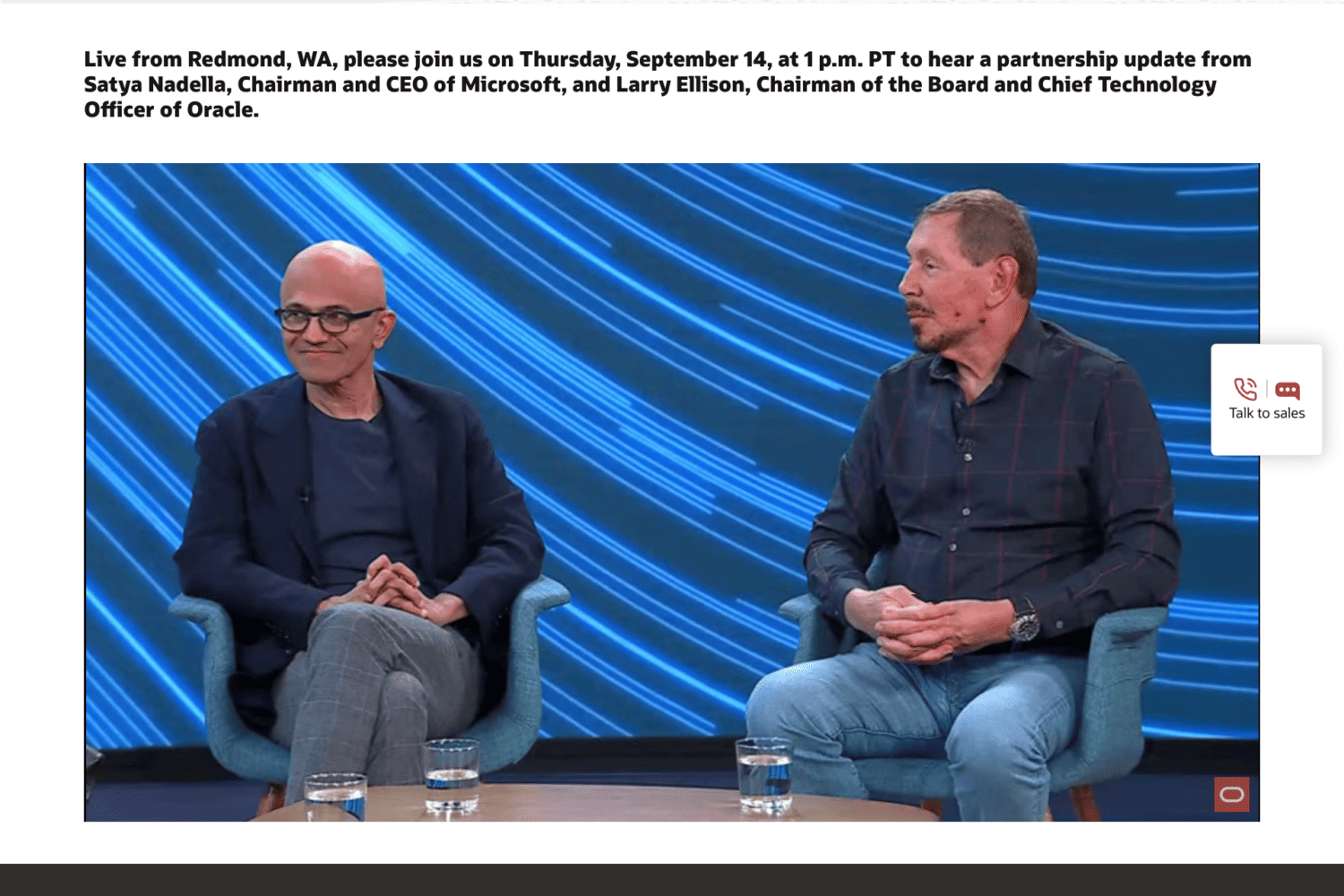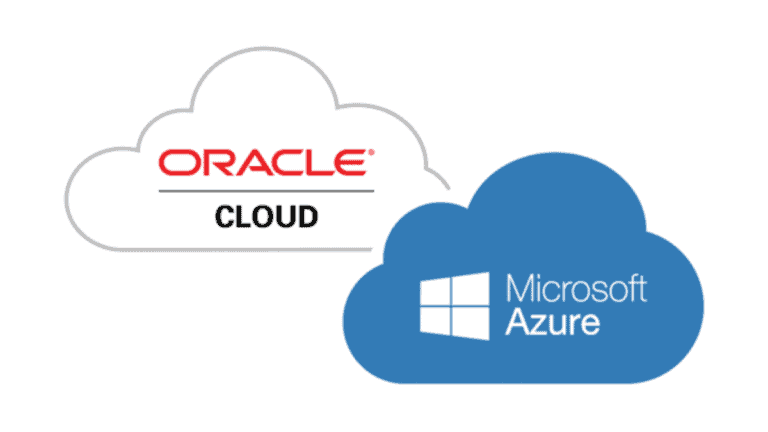Microsoft and Oracle expand collaboration and make Oracle hardware and software available in Azure datacenters.
Larry Ellison, the founder of Oracle, said he was at Microsoft’s Redmond, Washington, facility today for the first time in his life. He was there visiting Satya Nadella, Microsoft’s CEO. Together they announced further integration between Microsoft and Oracle. From now on, joint customers can run Oracle databases in Azure environments.
Today’s announcement is pretty big news. Hence, the announcement is given extra force by a joint appearance by Nadella and Ellison. The partnership between Microsoft and Oracle has been fairly close for several years. For example, the interconnect between the data centers of the companies. This makes it possible to get things like Oracle Database Service for Azure to customers. Today’s announcement, however, goes even further than this. It involves physically putting Oracle hardware (and software) inside Azure datacenters, in a colocation fashion.
AI can’t do without data
The reason for this deeper integration between Oracle and Microsoft is that both parties see great value in linking Microsoft’s middleware and front-end software with Oracle’s Autonomous Database. “AI exists by the grace of data,” according to Nadella during the announcement. “With this collaboration, we can bring Azure OpenAI to data.” He says it has to be done this way because it requires very low latency when it comes to accessing the data.
According to Ellison, the new partnership brings together Oracle’s best hardware and software with all the advanced functionality Microsoft can offer. According to him, this is not only a good idea according to Microsoft and Oracle. He says customers are also very excited about this collaboration. He sees many customers using multiple clouds. Then a collaboration like today’s is interesting for those customers anyway, is the thought.

Accelerating migrations
The partnership announced today by Nadella and Ellison on behalf of Microsoft and Oracle is not only interesting for today’s applications. Toward the future, too, the gentlemen see benefits. “Many customers have partially migrated to the cloud, but a lot of data is still on-prem,” Ellison points out. With further cooperation between the two parties, they are trying to speed up the process by making it easier for customers to do it. The idea here is also that management can be done seamlessly, in a simple and secure way, he indicates.
Listening carefully to what Nadella and Ellison talk about, Oracle seems to have been the main instigator of this deeper collaboration. According to Nadella, Ellison has pushed very hard on the low latency needed these days. That, of course, is what this collaboration as indicated above solves. Nadella goes on to reiterate that this means they are listening to what customers want. He again states at the end of the announcement that you have to have data to deploy AI. “And that data is in an Oracle database,” he states. That is not always the case in practice, of course, but for the joint customers of Microsoft and Oracle it is, of course. They want to address those first and foremost with this.
To point out the importance of Oracle, Nadella has an anecdote at the end of the short session. When he started at Microsoft, he was asked about getting ISVs on Windows NT. His response was that he could only do that if they could first get Oracle on Windows NT. This is his way of indicating that Oracle is (still) a very important company when it comes to the fundamental technology on which much is built. Ellison ends by claiming that hundreds of customers are now using the interconnect between Microsoft and Oracle, but that customers want more. So now they are offering that. “We’ve made the network invisible,” according to him. You can now interconnect everything within Azure without realizing you’re dealing with multiple stacks.
